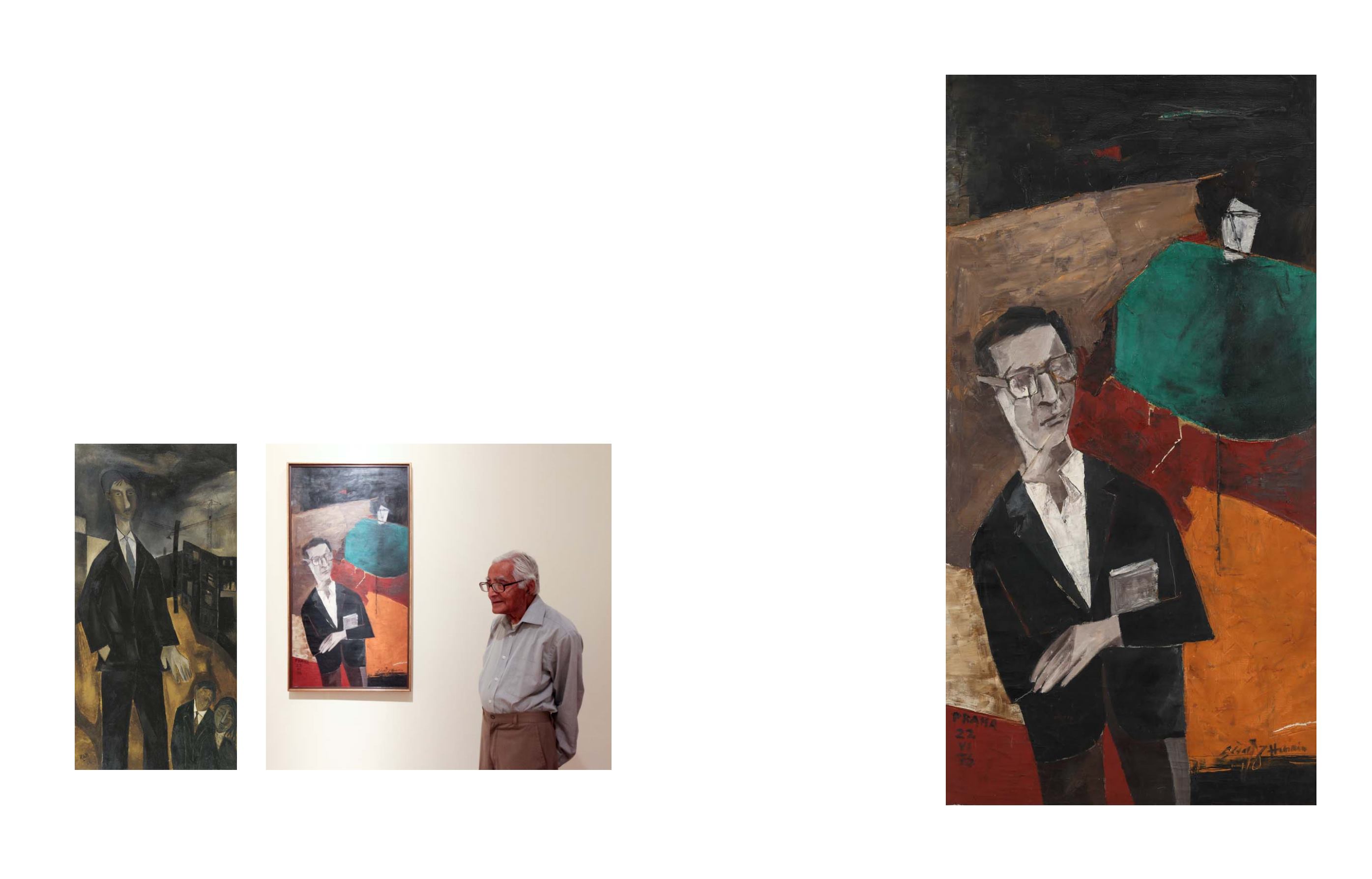

38
39
20
M F HUSAIN
(1913 ‒ 2011)
Portrait of Ram Kumar
Signed in Devnagari and signed again
‘Husain’ (lower right); inscribed and
dated ‘PRAHA / 22 VI 76’ (lower left);
bearing Vadehra Art Gallery label on
the hard board (on the reverse)
1976
Acrylic on canvas
49.75 x 26.5 in (126.1 x 67 cm)
Rs 50,00,000 ‒ 70,00,000
$ 74,630 ‒ 104,480
EXHIBITED
Ram Kumar: A Retrospective
, New Delhi:
National Gallery of Modern Art (NGMA)
presented by Vadehra Art Gallery, 20
November ‒ 12 December 1993
M F Husain: A Tribute
, New Delhi:
Vadehra Art Gallery, 2012
Ideas of Sublime
, New Delhi: Lalit Kala
Akademi presented by Vadehra Art
Gallery, 5‒10 April 2013
PUBLISHED:
Ram Kumar: A Retrospective
, New Delhi:
Vadehra Art Gallery, 1993 (illustrated,
unpaginated)
Gagan Gill ed.,
Ram Kumar: A Journey
Within
, New Delhi: Vadehra Art Gallery,
1996, p. 208 (illustrated)
Yashodhara Dalmia,
M F Husain: A Tribute
New Delhi: Vadehra Art Gallery, 2012,
pp. 34‒35 (illustrated)
MFHusain andRamKumarwere among the first generation
of artists in post‒independence India to incorporate
Western aesthetics to carve a unique “Indian” identity in
modern art. They struck a mutual friendship after meeting
for the first time in 1953 and over the years, collaborated
on several artistic endeavours, including group exhibitions.
Kumar, who is best‒known for his Varanasi (Benaras)
paintings, visited the pilgrimage site for the first time with
Husain.
The present lot is a portrait of Ram Kumar, painted by
Husain as an homage to his compatriot and friend Kumar,
who was unable to attend a joint exhibition of the two
artists in Prague. They had participated in a joint exhibition
in Delhi earlier that same year.
In a nod to the artist, Husain painted the present lot in the
early figurative style of Kumar, who, until the mid‒1960s,
painted human subjects, whose lost expressions invoked a
deliberate pathos that conveyed his own despairing views
on the human condition. According to critic Nirmal Verma,
in Kumar’s early works, “The forlorn figures huddled in the
foreground not only appear to be estranged from their
environment, but what is more disturbing, they seem to
be strangers to one another... If Ram Kumar’s figures look so
bereft, it is because they are bereft of all emotions, entirely
de‒emotionalised; frozen in their immobility they freeze
us from within... With all his stylization one can recognise
the human contours of the bodies, their gaunt faces and
staring eyes, they even have a certain kind of wan beauty.”
(Gagan Gill ed.,
Ram Kumar: A Journey Within
, New Delhi:
Vadehra Art Gallery, 1996, p. 22)
Adopting a similar aesthetic, Husain painted a stoic‒faced
Kumar in the foreground, posed with folded arms, dressed
in a suit – a stance very similar to some of Kumar’s own
depictions of male forms during the mid‒ to late 1950s.
Ram Kumar in front of his portrait by M F Husain at the group show,
Ideas of Sublime
, curated by Gayatri Sinha
at the Lalit Kala Akademi in New Delhi in 2013. Husain painted Ram Kumar in his style.
Image courtesy of Manisha Gera Baswani
Ram Kumar,
Vagabonds
, 1956. Reproduced from
Gagan Gill ed.,
Ram Kumar: A Journey Within
, New
Delhi: Vadehra Art Gallery, 1996, p. 58


















